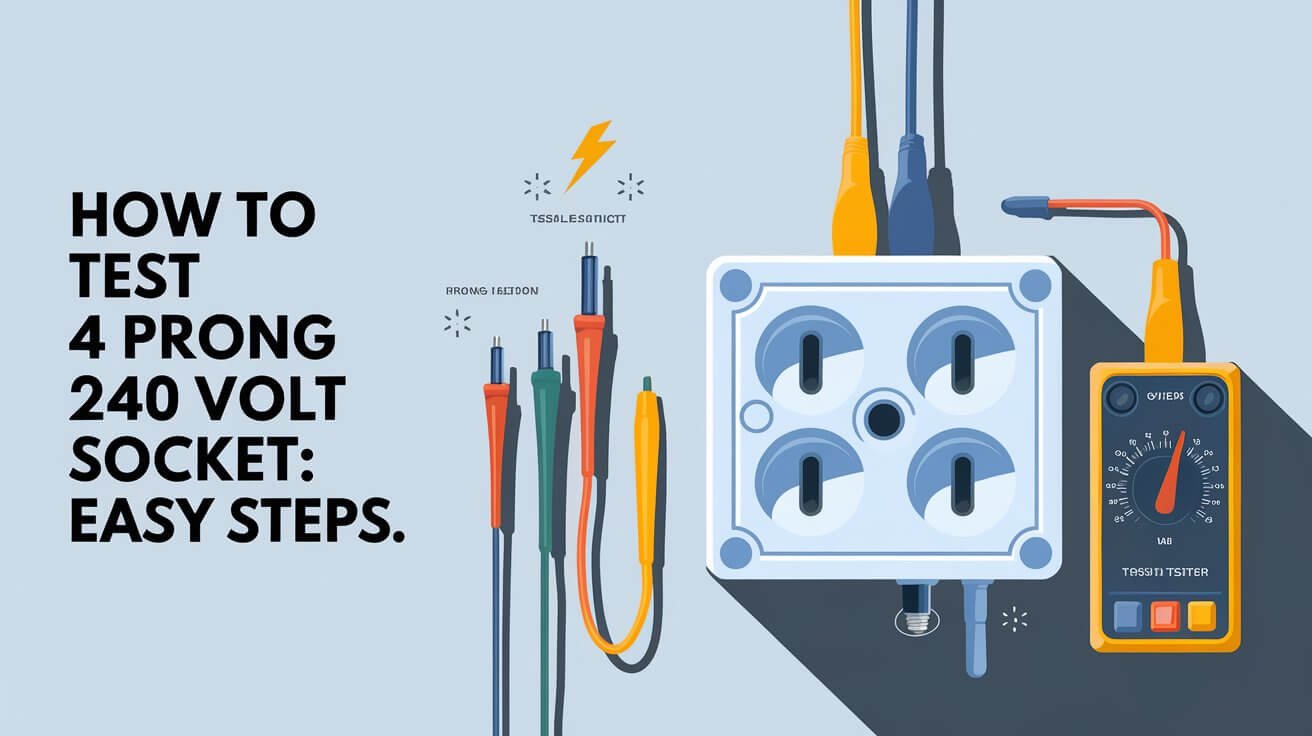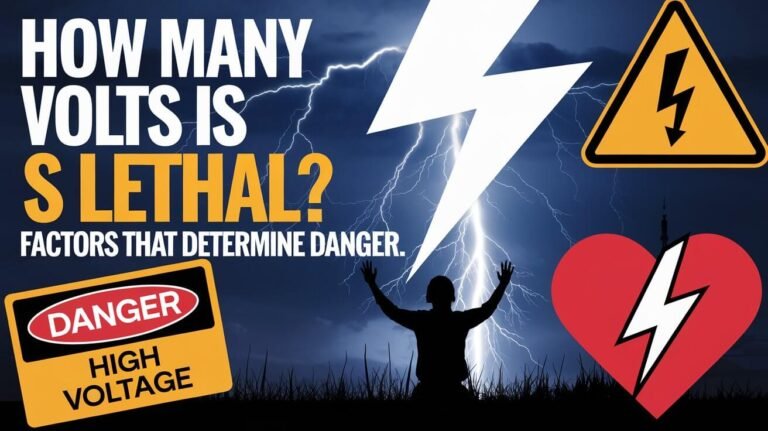
In the United States, 240-volt outlets are often found in kitchens for electric ranges. They should never be used with products that draw more than 50 amps. It’s important to test these outlets properly for electrical safety and efficiency.
Understanding the importance of socket testing can help prevent accidents. It ensures your home’s electrical system works correctly.
Electrical safety is key when dealing with 240-volt outlets. The standard 4-prong type has been used in the US for over 25 years. It’s vital to know how to test these outlets to make sure they’re working right.
This process involves checking the voltage and verifying the outlet’s configuration. It’s critical for safe and efficient operation. By following the right procedures for socket testing, you can prevent electrical hazards and keep your home safe.
Essential Safety Precautions Before Testing
Working with electrical systems, like 240-volt sockets, requires careful attention to safety. Always wear insulated gloves and safety glasses. This helps prevent injuries from electrical shock or debris.
Before you start, make sure you have the right safety gear. Follow basic electrical safety rules. This means turning off power sources and using the right tools to avoid accidents. It’s also important to be ready for emergencies, like having a fire extinguisher nearby and knowing how to shut off the main power.
Required Safety Equipment
- Insulated gloves
- Safety glasses
- Fire extinguisher
- Proper tools, such as a multimeter
Basic Electrical Safety Rules
Always turn off power sources before starting work. Use the right tools to avoid accidents. Know the electrical system you’re working with, including where the main power supply is and how to shut it off in an emergency.
Emergency Response Preparation
In case of an electrical accident, stay calm and follow your emergency plan. Know how to shut off the main power, use a fire extinguisher if needed, and get medical help if someone is hurt.
| Safety Equipment | Description |
|---|---|
| Insulated Gloves | Protect hands from electrical shock |
| Safety Glasses | Protect eyes from flying debris |
| Fire Extinguisher | Put out fires in case of an emergency |
Required Testing Equipment and Tools
Testing a 4-prong 240-volt socket needs the right tools. A multimeter is great for measuring voltage, resistance, and current. A voltage tester checks if there’s voltage. For a budget-friendly option, a six-dollar tester can work for 240-volt outlets.
Other tools might be needed for accurate testing. It’s important to choose high-quality tools for reliable results. Look for tools that can measure voltage, resistance, and current. They should have good probes, easy-to-read displays, and be durable.
Using the right tools, like multimeters and voltage testers, ensures safe and accurate testing. Always follow safety rules when working with electricity to avoid harm.
Parts of a 4 Prong 240 Volt Socket
A 4-prong 240-volt socket has several important parts. These include socket terminals, wiring colors, and different 240V socket types. Knowing how to identify these parts is key. The 4th prong, added in 1996, adds a neutral wire for safety.
To identify the terminals, look for L1, L2, Neutral, and Ground. Each has a specific role. The wiring colors also help identify the wires’ purposes. The colors are: black (hot), red (hot), white (neutral), and copper or green (ground).
Terminal Identification and Wiring Color Codes
Understanding 240V socket types is important. The 4-prong socket has a dedicated ground wire for safety. Knowing the wiring colors and terminal functions is vital for safe testing.
Socket Configuration Types
There are two main 240V socket types: 3-prong and 4-prong. The 4-prong socket is more common today, with a dedicated ground wire. Knowing the differences between these types is essential for safe use.
Socket Power Supply Verification
To check the power supply of a 4-prong 240-volt socket, you need to look at the electrical current. Also, make sure the circuit breaker works right. The National Electrical Code (NEC) says all 240-volt outlets must have four slots. These include two “hot” slots, one neutral slot, and one ground slot.
The two “hot” slots should have about 240 volts. The voltage between any two slots should be 120 volts. When testing the 240-volt outlet, you should see 240 volts ±10%.
To verify the power supply, find the circuit breaker that matches. Then, use a voltage tester to check if the power is correct.
Here are the expected voltage readings:
- 240 volts ±10% between the two “hot” slots
- 120 volts ±10% between either “hot” slot and the neutral or ground slot
A working outlet shows 110 to 120 volts on a multimeter. The voltage detector lights up when you insert probes into the small outlet slot and the center screw. This means the outlet is grounded properly. By following these steps and using the right tools, you can make sure your 4-prong 240-volt socket is safe and working right.
| Voltage Reading | Expected Value |
|---|---|
| Between two “hot” slots | 240 volts ±10% |
| Between “hot” slot and neutral or ground slot | 120 volts ±10% |
How To Test 4 Prong Socket 240 Volt Socket Step-by-Step
To make sure a 4-prong 240-volt socket works right and safely, you need to test it well. This means checking the circuit breaker, measuring the voltage, and testing the grounding. These steps help find problems like bad grounds, which are common in about 10% of 220V outlet checks.
For voltage testing, you should use a multi-meter. This tool is key for checking the voltage and wiring in 220V outlets. You put one meter lead on L1 and the other on L2 for 240V. Then, you check the voltage between L1 to Neutral, L2 to Neutral, L1 to Ground, and L2 to Ground. These should all show 120V.
Also, Neutral to Ground should show 0V. This means the grounding is correct.
Circuit Breaker Check
First, make sure the circuit breaker works right. This is key for safety and to avoid power surges while testing.
Voltage Measurement Process
The voltage test checks the voltage between different parts. For a 4-prong 240-volt socket, the dryer should show 220 to 240 volts. If you’re testing a 120-volt outlet, you should see about 120 volts.
Ground Wire Testing
Testing the ground wire is very important for electrical safety. A multi-tester can spot bad grounds. If the outlet doesn’t work, unplug the dryer and call a local electrician.
Common Socket Issues and Signs
Electrical faults can be a big worry in any home. Socket damage is a common problem that can lead to bigger issues. Wiring problems, in particular, can be dangerous if not fixed. It’s key to spot signs of socket damage or electrical faults to avoid accidents and keep your home and family safe.
Some common signs include discolored or melted plastic, burning smells, and sparks. These signs mean there might be too much heat, short circuits, or damaged wires. Also, if plugs keep falling out of outlets, it could mean a fire risk. It’s important to fix these problems fast to avoid electrical fires or shocks.
To spot socket issues, watch for:
- Discolored or melted plastic
- Burning smells or sparks
- Plugs falling out of outlets
- Warm touch or overheating
- Light flickering or frequent tripping of outlets
Regular checks and upkeep of your electrical sockets can stop these problems. If you see any signs of damage or faults, get a pro electrician to look at it. Fixing these issues quickly keeps your electrical system safe and working well.
| Signs of Socket Damage | Potential Risks |
|---|---|
| Discolored or melted plastic | Electrical fires or shocks |
| Burning smells or sparks | Electrical fires or explosions |
| Plugs falling out of outlets | Fire risks or electrical shocks |
Professional Inspection Requirements
Regular electrical inspections are key for safety in homes and businesses. They spot problems early, preventing fires and dangers. Keeping records of these inspections is vital for future upkeep and fixes.
How often you need an inspection depends on where you are. Homes usually need one every 10 years. Businesses might need them more often, based on their type and how much electricity they use. Keeping good records helps stay safe and catch issues early.
Testing Frequency Guidelines
How often you need an electrical check changes based on a few things. These include the property’s age, its electrical system, and how much it’s used. Here are some basic rules:
- Residential properties: every 10 years
- Commercial properties: every 5 years, or more often based on the business
- Industrial properties: every 3 years, or more often based on usage
Documentation Requirements
It’s important to keep detailed records of electrical checks. These should include:
| Information | Description |
|---|---|
| Date of inspection | The date the inspection was done |
| Results of inspection | A summary of what was found, including any problems |
| Recommendations for repairs | A list of suggested fixes or maintenance |
Following these guidelines and keeping accurate records, you can ensure safety and avoid electrical risks.
Maintenance Tips for 240V Outlets
To keep your 240-volt outlets safe and working well, regular maintenance is key. This means doing electrical upkeep and safety checks. These steps help spot and fix problems early on.
Keeping your outlets in good shape is important for your appliances’ safety and efficiency. Here are some tasks to add to your routine:
- Make sure all outlets work right and give the right voltage.
- Look for any damage, like frayed cords or loose connections.
- Do safety checks to ensure outlets are grounded and meet electrical standards.
Regular Check Schedule
It’s important to have a regular schedule for checking your outlets. Set reminders to check them every 6-12 months. During these checks, look for damage and fix or replace what’s needed.
Cleaning Methods
Cleaning your outlets is also important. Use a soft brush or compressed air to remove dust and debris. This keeps your outlets safe and working well.
| Maintenance Task | Frequency | Importance |
|---|---|---|
| Socket maintenance | Every 6-12 months | High |
| Electrical upkeep | Every 6-12 months | High |
| Safety checks | Every 3-6 months | Critical |
Bottom Line
Testing and keeping 4-prong 240-volt sockets in good shape is key for electrical safety. It also helps your high-voltage appliances work well. By following this guide, you can do simple socket testing and spot any problems. But, for tricky issues or if you’re unsure, get help from a professional.
Always put safety first when dealing with high-voltage electrical systems. Follow the safety tips, use the right tools, and be ready for emergencies. By being careful and taking the right steps, you can use your 240V outlets safely and enjoy their benefits.
Troubleshooting FAQs
What is the importance of proper testing for 4-prong 240-volt sockets?
Testing 4-prong 240-volt sockets is key for safety and efficiency. They are found in homes and power big appliances like ovens and dryers.
What safety equipment is required before testing a 4-prong 240-volt socket?
You’ll need insulated gloves, safety glasses, and a fire extinguisher before testing. Always follow electrical safety rules and turn off the power first.
What tools are needed to test a 4-prong 240-volt socket?
You’ll need a multimeter and a voltage tester. You can also use an affordable Sperry tester.
How do I identify the different terminals in a 4-prong 240-volt socket?
A 4-prong socket has L1, L2, Neutral, and Ground terminals. The wiring colors help you know each wire’s purpose.
How do I verify the power supply to a 4-prong 240-volt socket?
First, check if the socket is live. Then, use a voltage tester to measure voltage. Remember to find the circuit breaker too.
What is the step-by-step process for testing a 4-prong 240-volt socket?
Start by checking the circuit breaker. Then, measure voltage between terminals. Make sure grounding is correct. Always be safe and precise.
What are the common issues that can be identified by testing a 4-prong 240-volt socket?
Testing can reveal wear, loose connections, wrong wiring, and cord damage.
When and why are professional inspections necessary for 4-prong 240-volt sockets?
Get a pro to check them regularly, in homes and businesses. The schedule and what to document depend on local rules.
How can I maintain my 4-prong 240-volt outlets?
Do regular self-checks, clean them as needed, and know when to get a pro. This keeps them working well.




